Within This Page
Introduction
Sealants were used many hundreds of years ago. The Tower of Babel was reportedly built with mortar and tar or pitch as a sealant. Naturally occurring bitumen and asphalt materials have been widely accepted as sealants for many centuries. Prior to the 1900's most sealants evolved from vegetable, animal, or mineral substances. The development of modern polymeric sealants coincided with the development of the polymer industry itself, sometime in the early 1930's.
Joint sealants are used to seal joints and openings (gaps) between two or more substrates, and are a critical component for building design and construction. The main purpose of sealants is to prevent air, water, and other environmental elements from entering or exiting a structure while permitting limited movement of the substrates. Specialty sealants are used in special applications, such as for fire stops, electrical or thermal insulation, and aircraft applications.
Sealants are used for a variety of commercial and residential applications. Common sealants include silicone, acrylic, urethane, butyl and other polymeric types. Various formulations have been developed over the years, which meet performance specifications established by industry standards, as well as for the specific and unique needs of the end user.
Description
Selection of Sealants
The proper application of a sealant involves not only choosing a material with appropriate physical and chemical properties, but also having a good understanding of joint design, substrates to be sealed, performance needed, and the economic costs involved in the installation and maintenance of a joint sealant.
Typical considerations for selecting a sealant type for use in the construction industry are:
- Joint Design: The specifics of a joint design must match up with a sealant's movement capabilities for the installed conditions. The practicality of installation of the sealant and other joint elements and the desired aesthetic appearance also need to be considered.
- Physical and Chemical Properties: Properties of the sealant such as, modulus of elasticity, its stress/strain recovery characteristics, tear strength, and fatigue resistance are all factors that influence sealant performance in a joint. The sealant polymeric type along with additives such as fillers and plasticizers will affect the performance of the product.
- Durability Properties: The adhesion of a sealant to a specific substrate(s) and its aging characteristics as they relate to resistance to among others ultra-violet radiation, moisture, temperature, cyclic joint movement, movement during curing, and bio-degradation can profoundly influence the service life of the installed sealant.
- Application/Installation Properties: Important considerations include the consistency of the sealant (pourable or gunnable), pot life and tooling time, tack free time, application temperature range, and low temperature "gunnability" (i.e. ability to be dispensed easily by sealant gun). Sealants used for interior applications, even in high-rise or light commercial structures, will have properties and needs different from those used in other applications, such as structural sealant glazing or exterior building facade seals.
Key Features of Sealant Chemistries
Joint sealants are available in two forms: liquid-applied and preformed. The following references to Class indicate movement potential (e.g. Class 25 indicates ± 25% movement)
Liquid-Applied
- Latex (water-based, including EVA, acrylic)
- Used mainly in residential and light commercial construction applications
- Interior and exterior uses
- Premium products rated for movement meet (ASTM C920, Classes 12½ and 25)
- Products not rated for movement meet (ASTM C834)
- Excellent paintability (with latex paints)
- Very good exterior durability
- Exhibit some shrinkage after cure
- Sometimes referred to as caulk
- Not used for exterior applications on high rise construction or for applications undergoing cyclic movement greater than ±25%
- Acrylic (solvent-based)
- Used in residential and light commercial construction, mainly for exterior applications
- Generally have a maximum of ± 7½% movement (ASTM C1311)
- May need special handling for flammability and regulatory compliance
- Can be painted
- Short open time; difficult to tool
- Exhibit some shrinkage after cure
- Often used for perimeter sealing; low movement joints
- Butyls (solvent-based)
- Excellent adhesion to most substrates
- Generally have a maximum of ± 7½% movement (ASTM C 1311)
- Excellent weathering
- Good use as adhesives in industrial and packaging applications
- Sometimes used in curtain wall applications where adhesion to rubber compounds is required
- Most are stringy and difficult to apply neatly
- May show some shrinkage after cure; may harden and crack over time on exposed surfaces
- Polysulfides
- First "high-performance" sealant chemistry; mainly used in industrial applications
- Products rated for movement meet (ASTM C920, Classes 12½ and 25)
- Poor recovery limits their use in joints with moderate cyclic movements
- Can be formulated for excellent chemical resistance (especially for aviation fuel)
- Good performance in submerged applications
- Require a primer on almost all substrates
- Silicones
- Structural sealant glazing of glass to metal framing systems
- Excellent joint movement capabilities (ASTM C920, Classes 25, 35, 50, and 100/50)
- Excellent UV resistance and heat stability
- Good adhesion to many substrates especially glass; a primer is recommended on some substrates, particularly cementious substrates
- Most formulations are not paintable; however, there are a few that are paintable
- Used in vandal resistant, missile impact, and blast resistant glazing systems and to insulate glass to improve thermal performance (reduce heat loss).
- Acetoxy chemistry based sealants have an acidic acid odor while curing, but newer chemistries have very low odor
- High, medium and low modulus materials available
- May stain some types of porous materials such as concrete and natural stone
- Non-staining and non-bleeding formulations are available where aesthetic considerations are important
- Polyurethanes
- Used in industrial and commercial applications
- Very good movement capabilities (ASTM C920, Classes 12½, 25, and 50)
- Not used in structural glazing applications (avoid direct contact to glass)
- Excellent adhesion, generally without a primer for many substrates (cementious substrates require a primer)
- Can be formulated for good UV resistance
- May stain some types of porous materials such as concrete and natural stone
- Paintable
- Some formulations may contain low levels of solvent
Factory Preformed
- Dense and Cellular Gaskets
- Generally used to seal glass in openings and joints between metal panels and usually installed under compression
- Dense and cellular rubber products are generally formulated from EPDM, neoprene, silicone, and thermoplastic polymers
- Cellular non-silicone products meet (ASTM C864), For dense products most meet (ASTM C509), silicone products meet (ASTM C1115) and thermoplastics meet (ASTM E2203)
- Extruded and Molded Seals
- Fabricated primarily from silicone formulations, some polyurethane formulations are also available
- Silicone formulations meet (ASTM C1518, Classes 12½ to 200)
- Provided as extruded strips in various standard colors and widths from 1 to 6 inches (25 to 152 mm)
- Provided as custom molded components for corners and other transition areas
- Compression systems
- Preformed, precompressed products usually fabricated of a polyurethane, acrylic impregnated cellular component with a silicone rubber exterior face
- After insertion in the joint opening the foam expands to be compressed in the joint and the rubber face is sealed to the substrates
- Typical products are capable of ±25% movement
Application
Sealants are used to seal joints and openings in various architectural applications, which include:

- High- and low-rise commercial buildings:
- Exterior and interior perimeter of windows
- Roofing and flashing penetrations and terminations
- Building and material expansion joints
- Interior perimeters of doors, baseboards, and moldings
- Plazas and parking deck joints in traffic surfaces
- Joints between tilt-up concrete exterior panels
- Airport runway and apron pavement joints
- Bridge and highway pavement joints
- Sidewalks, parking lots and flat work joints
- Water and wastewater treatment facility joints (including in submerged environments)
- Part of a fire and smoke stop assembly for joints and penetrations
- Structural sealant glazing
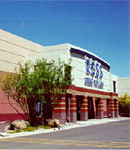
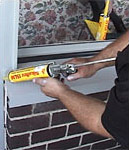
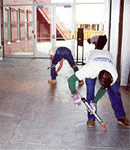
Joint Types
- Moving Joint (experiences cyclic movement)—Joints where the shape and size of the sealant joint changes significantly when movement occurs, for example, at control, expansion, lap, butt, and stack joints
- Static Joint (essentially non-moving)—Joints that are mechanically fixed to prohibit movement, generally defined as less than 7½% of the joint width, for example, at isolation and control joints, and air and water seals in windows and curtain walls)
Common Problems
- Sealants are often the least thought about and contribute the lowest percentage to a project's overall cost (less than 1%); however, they can become a serious, or for hidden or concealed joints, impossible problem to correct when a sealed joint fails
- There is both a science (joint design, adhesion and compatibility testing) and an art (sealant and joint components installation) to successful completion of a functional sealant joint.
- Sealants cannot make up for poor substrate conditions or improper or poor joint design. They must have:
- Proper joint design especially for joints that experience movement
- Selection of a durable sealant product appropriate for its function and environmental exposure
- Proper sealant, sealant backing, and joint filler installation
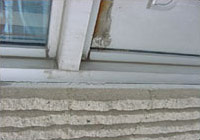
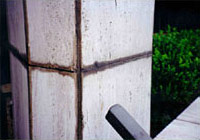
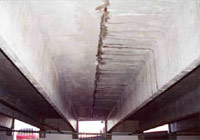
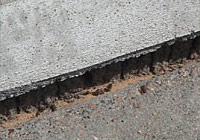
General Joint Design
The information in the following guides should be followed ehen designing and installing sealant joints:
- ASTM C1193—Standard Guide for Use of Joint Sealants
- ASTM C1472—Standard Guide for Calculating Movement and Other Effects When Establishing Sealant Joint Width
- SWRI—Sealants The Professional's Guide
In general, at least the following should be considered
Joint Location, Spacing, and Condition
- The location of joint openings must permit applicator access to install joint components and to properly tool the sealant
- The spacing of joints contributes to establishing joint width (wider spacing = wider joints)
- The substrate(s) for sealant adhesion must be sound and free of deleterious materials that would compromise adhesion
- Window perimeters must provide a minimum 1/4; inch (6 mm) wide surface for the sealant to bond to
- At the butt joints of exposed aggregate precast concrete panels the aggregate must be deleted and a smooth concrete surface provided for sealant adhesion
- At every termination detail there must be adequate access and sufficient bonding area for sealant application
Design for Sealant Movement
- For weatherproofing, a minimum depth of 1/4 inch (6 mm) for the sealant to substrate bond. A minimum width of 1/4 inch (6 mm) opening is necessary to ensure that sealant applied from a caulking gun will flow into the sealant joint properly.
- For moving joints, also need to consider:
- Use joints greater then the minimum of 1/4 inch (6 mm width), since wider joints can accommodate more movement than narrow joints and can also result in a greater joint spacing.
- Use a sealant backing or bond breaker tape to eliminate "three-sided adhesion." The sealant should bond only to the substrates that will be moving.
- Use a 2:1 width to depth ratio to accommodate movement. Create an "hourglass" shape for the sealant profile.
- For a joint size larger than 1 inch (25 mm), the depth should be kept to about 3/8 inch (10 mm).
- Practically, a sealant joint should not be greater in width than 2 inches (50 mm).
- The number and spacing of joints is critical to performance.
- Placing the sealant
- Use sealants that have not reached the end of their package shelf-life.
- Mix multi- component sealants properly (do not entrain air)
- Tape the outside edge of joints if necessary to prevent overlapping sealant application
- Gun the sealant into the joint opening at constant pressure and flow
- Prevent overlapping sealant (follow ASTM and SWRI Guides)
- Dry tool the sealant surface to completely fill the joint opening with sealant thereby wetting the entire substrate adhesion area
- Check the quality of the work frequently and keep samples
- Maintain a project log (e.g. sealant lot No., weather conditions, application procedure)
Sealant Selection
- For movement joints, only use a sealant that has a current Validation Certificate from the SWRI.
- Will the selected sealant accommodate the anticipated joint movement requirements?
- Will the sealant adhere to the substrate(s) properly? This is probably the most critical element in the selection process.
- Will the sealant have the requisite durability for the anticipated movement and environmental exposure?
- Is the sealant compatible with adjacent materials?
- Does the joint opening width allow for sufficient placement of sealant and other joint components?
- Will the sealant perform under the anticipated conditions of use?
- Is there a history of application success for the sealant in the specific application?
- Do the sealant manufacturer and supplier have the necessary in-house resources to support your application should problems develop?
- Has the sealant manufacturer verified by laboratory testing that the selected sealant is compatible with adjacent substrates (ASTM C1087), has been tested for adequate adhesion to those substrates (ASTM C719, C1635), and if aesthetics is a concern that it will not stain adjacent porous surfaces (ASTM C1248)?
- For high profile applications consider using third party quality control to confirm product performance.
Substrate Surface Preparation
- The most common mode of sealant joint failure is loss of substrate adhesion
- All weak material must be removed from the sealant adhesion surface of porous substrates including any form release agents
- Adhesion surfaces must be clean, dry, and free of dew or frost
- To prepare substrates use best practices as recommended by ASTM and SWRI Guides:
- For porous substrates: oil-free compressed air, abrasive blasting, high pressure water (allow to dry), grinding, or wire brushing
- For non-porous substrates: use the two lint-free rag method—wipe with solvent on the first rag immediately followed by a dry rag wipe
Priming
- Follow the sealant manufacturers recommendations for priming based on laboratory testing of the substrate(s) for the application
- Always prime substrates before insertion of the sealant backing
- Improves the sealant's adhesion in many situations
- Priming is not a substitute for good joint design and sealant application
- Many sealants perform well without the use of primers
- Primers should always be used for horizontal and submerged joint applications
- Almost all sealants, to achieve adequate adhesion for moving joints, require cement based substrates to be primed.
- Primers must be installed properly (e.g. use the correct primer, do not apply to thick or to thin, and requires drying or curing time before sealant application)
Joint Filler and Sealant Backing Materials: Why Use Them?
- A joint filler is inserted into joints that are deeper than required for the sealant backing and sealant installation
- For moving joints the joint filler and sealant backing must be compressible
- Sealant backing establishes sealant depth and helps to achieve an hourglass sealant profile
- Sealant backing provides resistance to sealant tooling pressure and helps to attain proper wetting of the substrate when sealant is tooled
- Sealant backing and bond breakers prevent detrimental 3-side adhesion for moving joints
- Recommended Materials
- Closed cell sealant backing: primarily a polyethylene foam with a surface skin
- Open cell sealant backing: primarily a urethane foam without a skin
- Bicellular sealant backing: composed of both open and closed cell polyethylene or polyolefin foam with a surface skin
- Bond breaker tape: primarily a self-adhesive polyethylene or teflon material
- Not recommended materials
- A rigid joint filler or sealant backing in joints that will experience movement
- Using braided sealant backing to compensate for a joint opening that is too large for it
- Keys to Success
- Closed cell sealant backing must be no more than 25 to 33% larger than joint width so it remains in compression and in place during sealant installation.
- Open cell and bicellular sealant backing must be at least 25% larger than joint width so it remains in compression and in place during sealant installation.
- Don't poke holes in closed cell sealant backing material during installation, this can cause air bubbles in the sealant compromising its ability to perform
- Properly installed sealant backing prevents sealant leakage and creates a proper sealant profile
- Sealant backing function ceases once sealant is applied, tooled, and cured
Structural Sealant Glazing
Structural sealant glazing involves attaching glass, metal, or other panel materials to a building's window or curtain wall metal framing system in place of using gaskets and other mechanical attachments. Only structural quality silicone sealants are used since they must be able to withstand ultraviolet radiation, weathering affects, and wind load and other stresses and transfer these affects to the metal framing system. The information in the following should be followed when specifying, designing, and installing structural sealant glazing:
- ASTM C1401—Standard Guide for Structural Sealant Glazing
- ASTM C1184—Standard Specification for Structural Silicone Sealants
- ASTM C1249—Standard Guide for Secondary Seal for Sealed Insulating Glass Units for Structural Sealant Glazing Applications
For effective structural sealant glazing joint design, at least the following structural joint parameters must be considered:
- "bite"—defined as the effective structural contact dimension of a structural sealant required on both the panel and frame faces to accommodate the required transfer of loads.
- "Thickness"—defined as the minimum structural sealant dimension between structurally bonded substrates (the panel and frame) to facilitate the installation of a sealant and to reduce stress on the structural sealant joint that results from differential thermal movement.
- "Deadload"—the weight that a panel places on a structural sealant joint when, for certain applications, no setting blocks are used to support a panel's weight
Weatherproofing Applications
Weatherproofing is intended to keep rain and other environmental elements from entering a building.
To achieve successful weatherproofing sealant joints at least the following parameters must be considered and where applicable designed for:
- "Joint Movement"—Occurs as a result of: changes in material temperature, seismic movement, elastic frame shortening, creep, live load, concrete shrinkage, moisture-induced material movement, and inadequate joint design. Joint movements must be evaluated, designed for, and accommodated.
- "Movement Capability"—The ± percent value that indicates the amount of movement the sealant can take in extension (+) and compression (-) from its original cured joint width. Movement capability and expected joint movement must be coordinated.
- "Installation Tolerances"—Depending on the substrate materials the joint opening will have a ± tolerance for its designed width which must be considered when establishing width (e.g. for a joint width of 1/2 inch (13 mm) in a brick masonry wall the tolerance for its width could be ±1/8 inch (3 mm) or more)
- "Sealant Selection"—Select the appropriate polymeric type for the application; however, within a polymeric type their can be a wide range in performance capabilities and properties. All sealants in that type may not perform similarly; therefore, it is important to research product capabilities prior to use.
Relevant Codes and Standards
Guide Specifications
- The American Institute of Architects
- MasterSpec
- Department of Defense
- Department of Veterans Affairs
Standards and Guidelines
ASTM has developed various test methods, guides, and specifications that are used for the design, testing, and installation of joint sealants. A brief listing of selected standards follows (For more information, log onto www.astm.org and select "Standards"):
- C834 Standard Specification for Latex Sealants—This specification covers one component latex sealants used for sealing joints in building construction.
- C920 Standard Specification for Elastomeric Joint Sealants—This specification covers the properties of a cured single- or multi-component cold-applied elastomeric joint sealant for sealing, caulking, or glazing operations on buildings, plazas, and decks for vehicular or pedestrian use, and types of construction other than highway and airfield pavements and bridges.
- C1184 Standard Specification for Structural Silicone Sealants—This specification describes the properties of cold liquid applied, single-component or multi-component, chemically curing elastomeric structural silicone sealants herein referred to as the sealant. These sealants are intended to structurally adhere components of structural sealant glazing systems.
- C1193 Standard Guide for Use of Joint Sealants—This guide describes the use of single- and multi-component, cold-applied joint sealants for parallel joint sealing applications in buildings and related adjacent areas, such as plazas, decks, and pavements for vehicular or pedestrian use, and types of construction other than highways and airfield pavements and bridges.
- C1247 Standard Test Method for Durability of Sealants Exposed to Continuous Immersion in Liquids—This test method covers a laboratory procedure that assists in determining the durability of a sealant and its adhesion to a substrate while continuously immersed in a liquid. This test method tests the influence of a liquid on the sealant and its adhesion to a substrate. It does not test the added influence of constant stress from hydrostatic pressure that is often present with sealants used in submerged and below-grade applications, nor does it test the added influence of stress from joint movement while immersed. This test method also does not (in its standard form) test the added influence of acids or caustics or other materials that may be in the liquid, in many applications.
- C1248 Standard Test Method for Staining of Porous Substrate by Joint Sealants—This test method covers four types of laboratory tests to determine if a joint sealant has a probability of staining a porous substrate (such as marble, limestone, sandstone, and granite). The tests are on compressed samples and include (1) storage under standard laboratory conditions, (2) storage in an oven, and (3) exposure in a fluorescent UV/condensation device, and (4) exposure in a xenon arc device.
- C1249 Standard Guide for Secondary Seal for Sealed Insulating Glass Units for Structural Sealant Glazing Applications—This guide covers design and fabrication considerations for the edge seal of conventionally sealed insulating glass units, herein referred to as IG units. The IG units described are used in structural silicone sealant glazing systems, herein referred to as SSG systems, SSG systems typically are either two- or four-sided, glazed with a structural sealant. Other conditions such as one-, three-, five-, or six-sided may be used.
- C1299 Standard Guide for Use in Selection of Liquid-Applied Sealants—This guide covers general background information for the comparative evaluation and selection of liquid-applied sealants for use in building construction.
- C1401 Standard Guide for Structural Sealant Glazing—Structural sealant glazing, hereinafter referred to as SSG, is an application where a sealant not only can function as a barrier against the passage of air and water through a building envelope, but also primarily provides structural support and attachment of glazing or other components to a window, curtain wall, or other framing system.
- C1472 standard Guide for Calculating Movement and Other Effects When Establishing Sealant Joint Width—This guide provides information on performance factors such as movement, construction tolerances, and other effects that should be accounted for to properly establish sealant joint size. It also provides procedures to assist in calculating and determining the required width of a sealant joint enabling it to respond properly to those movements and effects. Information in this guide is primarily applicable to single- and multi-component, cold-applied joint sealants and secondarily to precured sealant extrusions when used with properly prepared joint openings and substrate surfaces.
- C1481 Standard Guide for Use of Joint Sealants with Exterior Insulation and Finish Systems (EIFS)—This guide describes the use of single- and multi-component, cold-applied joint sealants, or pre-cured sealant systems for joint sealing applications, or both, in buildings using exterior insulation and finish systems (EIFS) on one or both sides of the joint.
- D5893 Standard Specification for Cold Applied, Single Component, Chemically Curing Silicone Joint Sealant for Portland Cement Concrete Pavements—This specification covers cold applied, single component, chemically curing silicone sealants that are based on polymers of polysiloxane structures and are intended for use in sealing joints and cracks in portland cement concrete highway and airfield pavements. The specification includes both non-sag and self-leveling types of sealants.
- E330 Standard Test Method for Structural Performance of Exterior Windows, Curtain Walls, and Doors by Uniform Static Air Pressure Difference—This test method describes the determination of the structural performance of exterior windows, curtain walls, and doors under uniform static air pressure differences, using a test chamber. This test method is applicable to curtain wall assemblies including, but not limited to, metal, glass, masonry, and stone components.
- E331 Standard Test Method for Water Penetration of Exterior Windows, Skylights, Doors, and Curtain Walls by Uniform Static Air Pressure Difference—This test method covers the determination of the resistance of exterior windows, curtain walls, skylights, and doors to water penetration when water is applied to the outdoor face and exposed edges simultaneously with a uniform static air pressure at the outdoor face higher than the pressure at the indoor face.
- E773 Standard Test Method for Accelerated Weathering of Sealed Insulated Glass Units—This test method covers procedures for testing the performance of preassembled, permanently sealed insulating glass units against accelerated weathering.
Additional Resources
Trade Associations and Other Organizations
- The Adhesive and Sealant Council
- ASTM International
- Sealant, Waterproofing, & Restoration Institute (SWRI)
Trade Publications
Educational
- Ahesives.org—an online educational portal providing unbiased information about adhesives and sealants to those that are relatively unfamiliar with the technology.








